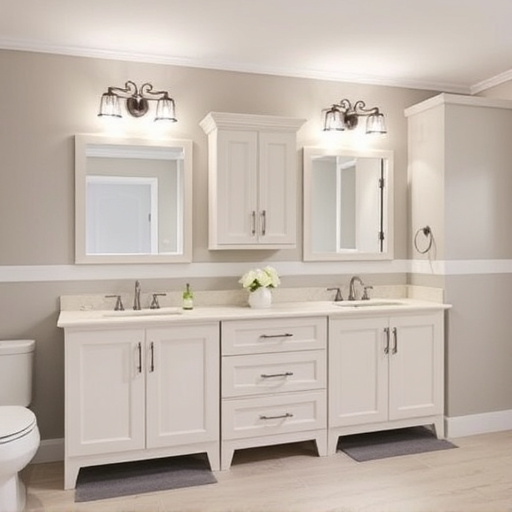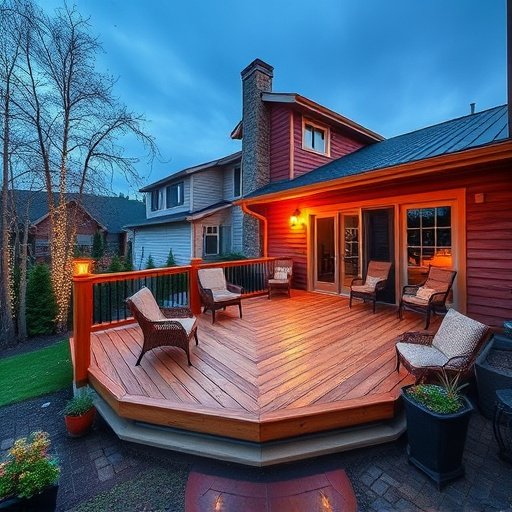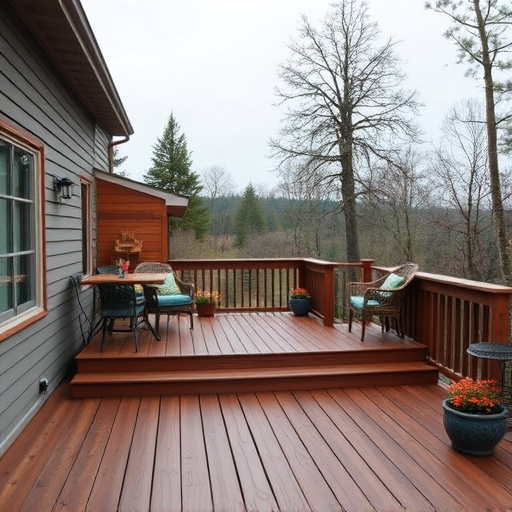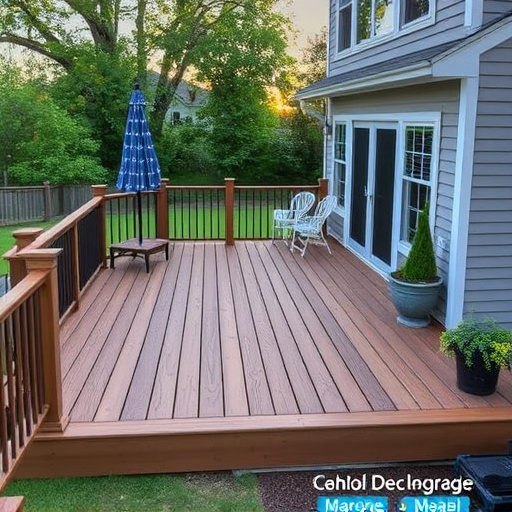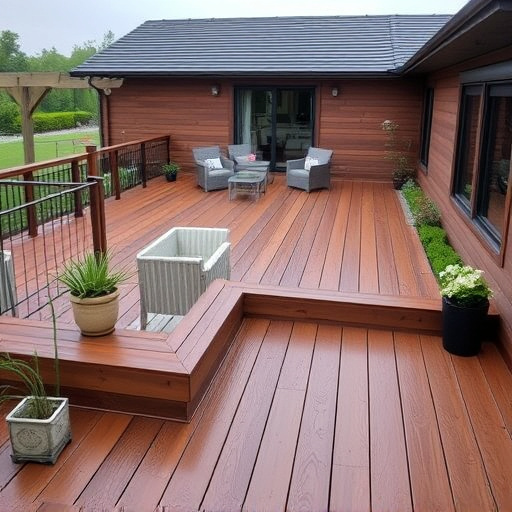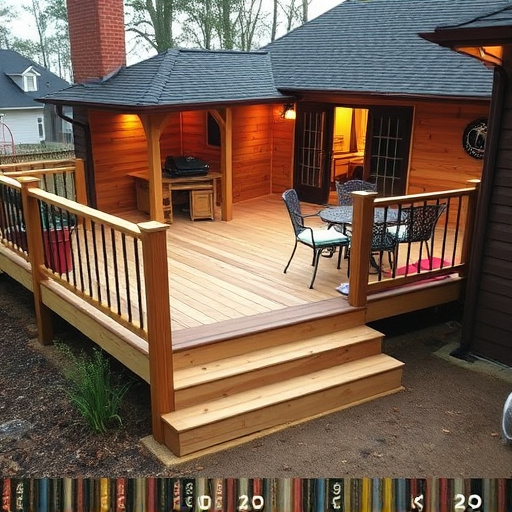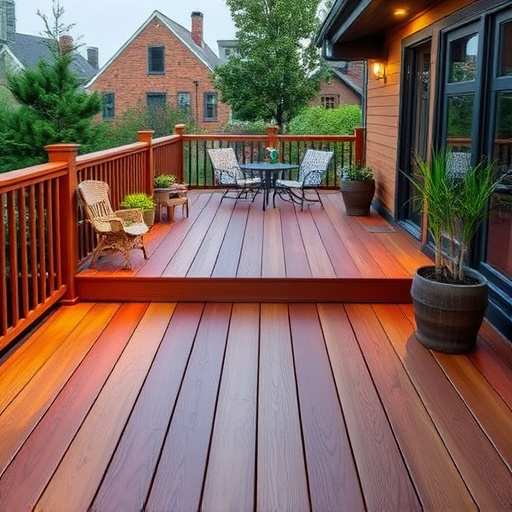Deck framing is essential for outdoor living spaces, ensuring stability and safety through even weight distribution and preventing structural failures. High-quality materials like treated lumber and steel connectors, along with proper fastening techniques, guardrails, and drainage systems, enhance structural integrity, resist rot, pests, and harsh weather conditions, and reduce accident risks. This holistic approach to deck framing, akin to roofing and siding, creates a safe and reliable outdoor environment for homeowners and guests.
Deck framing is a critical aspect of outdoor living spaces, offering both stability and safety. This comprehensive guide explores fundamental principles, ensuring your deck stands strong against time and weather. We delve into the selection of durable materials, crucial for long-term structural integrity. Additionally, discover essential safety features to transform your deck into a secure sanctuary. From robust framing techniques to smart design choices, learn how to create a safe haven that enhances your outdoor experience.
- Understanding Basic Deck Framing Principles
- Choosing Suitable Materials for Stability
- Implementing Safety Features in Deck Design
Understanding Basic Deck Framing Principles
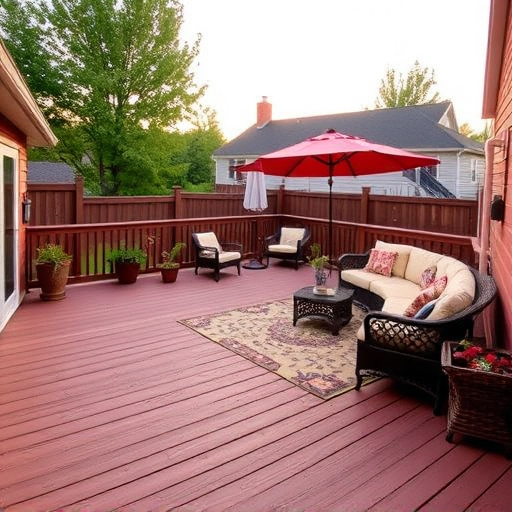
Deck framing is a critical aspect of outdoor living space construction that directly impacts stability and safety. Understanding fundamental deck framing principles involves grasping key structural components and their interconnections. A well-designed frame ensures even weight distribution, preventing uneven settling or potential collapse risks. It comprises strong joists, beams, and supporting posts securely attached to the deck’s foundation.
Proper siding services and residential roofing installations also complement robust deck framing. These exterior elements protect against environmental factors, enhancing structural integrity over time. For instance, high-quality siding installation can mitigate rot and pest damage while providing a seamless finish. Similarly, expert residential roofing adds a protective layer against harsh weather conditions, ensuring the longevity of the entire deck structure.
Choosing Suitable Materials for Stability
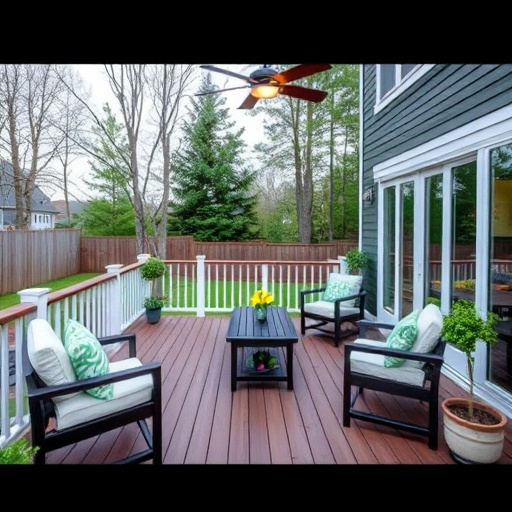
When it comes to deck framing, selecting the right materials is paramount for ensuring stability and safety. The structural integrity of a deck heavily relies on the quality and strength of its components. For instance, using high-grade lumber treated against rot and insects provides a solid foundation and long-lasting performance. This choice not only enhances the deck’s overall durability but also prevents unexpected failures that could lead to accidents.
Moreover, incorporating materials with superior load-bearing capabilities, such as steel connectors and reinforced posts, can significantly improve both stability and safety. Such structural enhancements, often recommended by roofing services and siding experts, distribute weight evenly and withstand extreme weather conditions. Similarly, ensuring proper drainage through quality siding and gutters contributes to the deck’s overall stability by preventing water damage and preventing lumber decay, a common issue in roofing and siding projects.
Implementing Safety Features in Deck Design
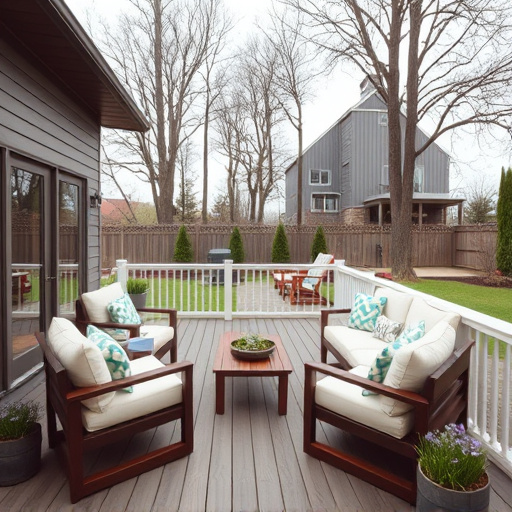
When designing a deck, incorporating safety features into the framework is paramount to ensuring a secure outdoor living space. Strong and durable deck framing forms the foundation for preventing potential hazards. One key aspect is to use high-quality materials that can withstand various weather conditions, reducing the risk of rot or weakening structures over time. Proper fastening techniques and connections are also vital; these include using reinforced joist hangers and ensuring all components are securely fastened.
Additionally, incorporating safety features such as guardrails and handrails is essential for deck stability. These elements provide a crucial layer of protection, especially around elevated areas or where there’s a risk of falling. A well-designed deck framing system, combined with these safety measures, not only enhances the overall aesthetic appeal but also guarantees that home owners and guests can enjoy their outdoor spaces with peace of mind, knowing they are using a secure and reliable structure. Think of it as integrating residential roofing and professional siding into your deck design—invested in home service solutions that contribute to both functionality and safety.
Deck framing is a critical aspect of ensuring both stability and safety. By understanding basic principles, selecting robust materials, and incorporating essential safety features, you can create a durable and secure outdoor living space. Implement these strategies for optimal deck framing to enjoy your deck for years to come, with peace of mind knowing it meets the highest standards of strength and safety.

